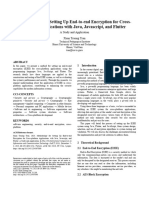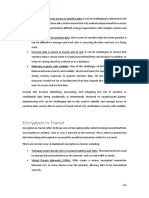0% found this document useful (0 votes)
32 views3 pagesNode Js
Data encryption is essential for securing RESTful APIs, ensuring the confidentiality and integrity of sensitive data during transmission and storage. It includes symmetric and asymmetric encryption methods, with techniques like AES and RSA being commonly used. Implementing encryption along with best practices can significantly enhance API security and protect against unauthorized access.
Uploaded by
Richard alain nsengumuremyiCopyright
© © All Rights Reserved
We take content rights seriously. If you suspect this is your content, claim it here.
Available Formats
Download as DOCX, PDF, TXT or read online on Scribd
0% found this document useful (0 votes)
32 views3 pagesNode Js
Data encryption is essential for securing RESTful APIs, ensuring the confidentiality and integrity of sensitive data during transmission and storage. It includes symmetric and asymmetric encryption methods, with techniques like AES and RSA being commonly used. Implementing encryption along with best practices can significantly enhance API security and protect against unauthorized access.
Uploaded by
Richard alain nsengumuremyiCopyright
© © All Rights Reserved
We take content rights seriously. If you suspect this is your content, claim it here.
Available Formats
Download as DOCX, PDF, TXT or read online on Scribd
/ 3

























































